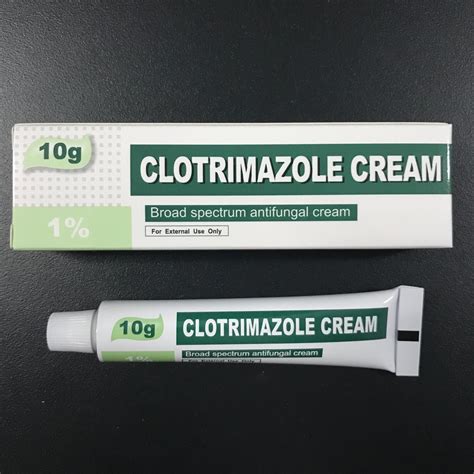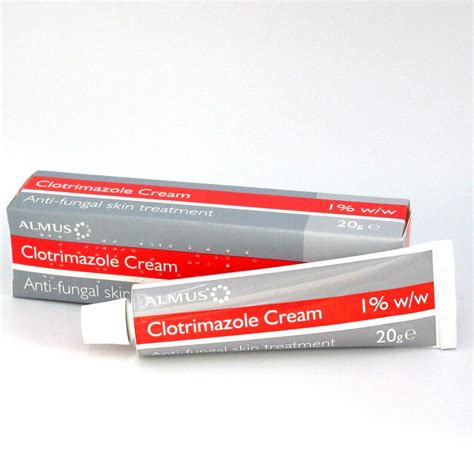Intro
Discover Clotrimazole Cream Uses for fungal infections, ringworm, and skin yeast infections, with benefits including antifungal properties and relief from itching and redness.
Clotrimazole cream is a widely used antifungal medication that has been effective in treating various fungal infections. The importance of understanding the uses of clotrimazole cream cannot be overstated, as it is a common over-the-counter medication that can be found in many households. Fungal infections can be uncomfortable and embarrassing, and if left untreated, they can lead to more serious health issues. Clotrimazole cream is a valuable treatment option for those suffering from fungal infections, and its uses are diverse and effective.
Clotrimazole cream is used to treat a variety of fungal infections, including athlete's foot, jock itch, and ringworm. These infections are caused by fungi that thrive in warm, moist environments, and can be spread through skin-to-skin contact or by walking barefoot in public areas. Clotrimazole cream works by stopping the growth of fungi, which helps to relieve symptoms such as itching, cracking, and redness. The cream is easy to apply and can be used on a variety of skin types, making it a convenient treatment option for those suffering from fungal infections.
The effectiveness of clotrimazole cream in treating fungal infections has made it a popular choice among healthcare professionals and patients alike. The cream is available over-the-counter, which means that patients can purchase it without a prescription. This makes it easily accessible to those who need it, and it can be used to treat fungal infections at the earliest stages. Clotrimazole cream is also relatively inexpensive compared to other antifungal medications, which makes it a cost-effective treatment option. With its ease of use, effectiveness, and affordability, clotrimazole cream is an ideal treatment option for those suffering from fungal infections.
What is Clotrimazole Cream?

How Does Clotrimazole Cream Work?
Clotrimazole cream works by interfering with the production of ergosterol, which is a component of the fungal cell membrane. Without ergosterol, the fungal cell membrane is unable to function properly, which ultimately leads to the death of the fungal cell. This helps to relieve symptoms such as itching, cracking, and redness, and can help to prevent the spread of fungal infections. Clotrimazole cream is also effective against a range of fungal species, including Candida, Aspergillus, and Trichophyton.Uses of Clotrimazole Cream

Benefits of Clotrimazole Cream
The benefits of clotrimazole cream include: * Effective treatment of fungal infections: clotrimazole cream is effective against a range of fungal species, making it a valuable treatment option for those suffering from fungal infections. * Easy to use: clotrimazole cream is easy to apply and can be used on a variety of skin types. * Affordable: clotrimazole cream is relatively inexpensive compared to other antifungal medications. * Available over-the-counter: clotrimazole cream is available without a prescription, making it easily accessible to those who need it.Side Effects of Clotrimazole Cream

Precautions and Interactions
Clotrimazole cream can interact with other medications, including: * Corticosteroids: clotrimazole cream can interact with corticosteroids, such as betamethasone, which can increase the risk of side effects. * Antibiotics: clotrimazole cream can interact with antibiotics, such as erythromycin, which can decrease the effectiveness of the antibiotic. * Antifungal medications: clotrimazole cream can interact with other antifungal medications, such as terbinafine, which can increase the risk of side effects.How to Use Clotrimazole Cream

Tips for Using Clotrimazole Cream
Here are some tips for using clotrimazole cream: * Use the cream for the full recommended treatment period, even if symptoms improve before the end of the treatment period. * Avoid using clotrimazole cream on broken or sensitive skin. * Avoid using clotrimazole cream in the eyes, nose, or mouth. * Wash your hands after applying the cream to avoid spreading the infection to other areas of the body.Conclusion and Final Thoughts

We hope this article has provided you with a comprehensive understanding of clotrimazole cream and its uses. If you have any questions or comments, please don't hesitate to reach out to us. We encourage you to share this article with others who may be suffering from fungal infections, and to take the necessary steps to protect yourself from these types of infections.
What is clotrimazole cream used for?
+Clotrimazole cream is used to treat a variety of fungal infections, including athlete's foot, jock itch, and ringworm.
How does clotrimazole cream work?
+Clotrimazole cream works by interfering with the production of ergosterol, which is a component of the fungal cell membrane.
What are the side effects of clotrimazole cream?
+The side effects of clotrimazole cream include redness and irritation, itching and burning, and allergic reactions.
How do I use clotrimazole cream?
+To use clotrimazole cream, wash the affected area with soap and water, dry the area thoroughly, and apply a thin layer of cream to the affected area.
Can I use clotrimazole cream on broken or sensitive skin?
+No, it is not recommended to use clotrimazole cream on broken or sensitive skin, as this can increase the risk of side effects.
